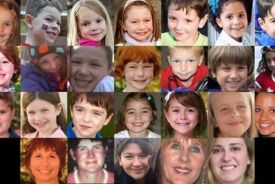International Space Station Crewmembers Return Safely to Earth, but Are Future U.S.-Russian Space Relations in Danger?
ByThree International Space Station (ISS) crewmembers returned safely to Earth Tuesday in Kazakhstan aboard a Soyuz ferry.
According to CBS News, NASA astronaut Rick Mastracchio, Russian cosmonaut Mikhail Tyurin and Japanese astronaut Koichi Wakata safely ended their six-month ISS tour. Another Soyuz spacecraft will take three different crewmembers to fill the vacancies left at the ISS later this month.
"I was a flight engineer on the space shuttle, but I didn't have my own set of controls," Mastracchio said in a pre-launch interview, according to CBS News. "Here in the Soyuz, I'm also the flight engineer but I'm actually going to be helping control the vehicle along with the commander.
"So I'm looking forward to having that front row seat, if you will, and actually helping operate the vehicle."
Russia's annexation of Ukraine's Crimea and the resulting sanctions levied by the U.S. has put the two countries' space arrangement in jeopardy, Scientific American reported. U.S. and Russian astronauts have not had an issue working together at the ISS, but the former needs the latter to ferry crewmembers back and forth.
Russian Deputy Prime Minister Dmitry Rogozin has previously stated he will sever ties with the U.S. completely due to the sanctions. However, Tuesday he reportedly announced Russia will no longer allow the U.S. to send astronauts to the ISS beginning in 2020.
BBC News noted Rogozin may just be blowing smoke, because the U.S. pays Russia hundreds of millions of dollars every year for RD-180 rocket engines. The U.S. also pays about $60 million per astronaut to be flown up to the ISS.
Still, NASA has been allowing private companies to fly ISS unmanned resupply missions and has contracts with SpaceX and Orbital Sciences. The missions launch from U.S. soil and could be a precursor to manned missions to the ISS and beyond. Of course, such missions are a long way off.
© 2025 University Herald, All rights reserved. Do not reproduce without permission.








